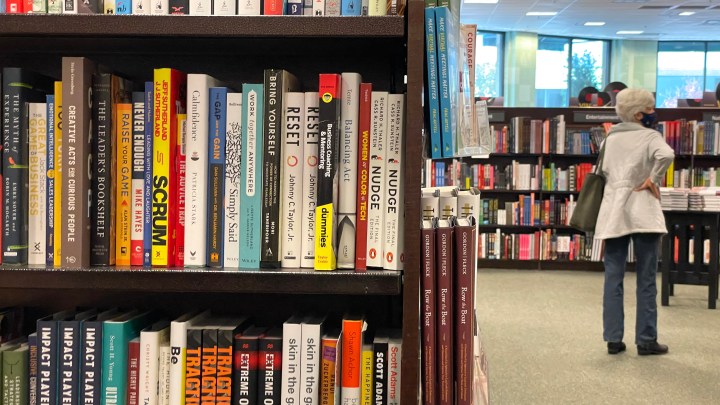
Supply chain snags hit books

If you’ve been buying more books during the pandemic, you’re not alone. Print book sales were up 18% in the first half of 2021, according to NPD BookScan, a group that tracks the industry.
But keeping up with that demand has been a challenge for publishers and retailers. They’re dealing with the same labor and supply chain snags as everyone else — plus a paper shortage.
Native Realities Press was planning to release new comic books and graphic novels in time for this year’s holiday shopping season. But in late summer, CEO Lee Francis had a realization: “It’s just not gonna happen,” he said. “We moved all the release dates back to February and March.”
Shipping delays, reduced printing capacity and a shortage of paper made debuting new titles impossible.
“This is the supply chain apocalypse, and really the comic book paper stock has just taken a hit,” Francis said.
That shortage starts with the raw material used to make paper: wood pulp.
Much of that pulp is sourced from sawmills, said Pete Stewart, who heads up Forest2Market and chairs the Forest Resources Association.
“About a third of that raw material would come from sawmill chips, the residuals from making lumber,” Stewart said.
At the start of the pandemic, Stewart said, many sawmills either downsized or shut down entirely. They couldn’t predict how Americans would use their extra time and relief money.
“Everybody sheltered in place, and then they decided, ‘I’ll probably put a new deck on the back of my house. I might expand my office or build a fence,’” he said.
Reduced capacity at sawmills created a supply problem, and the prices of lumber and wood pulp spiked. Meanwhile, online shopping was on the rise, which caused paper manufacturers to shift their priorities.
“A lot of paper and pulp has been redirected toward things like shipping boxes and away from book-grade paper,” said Kristen McLean, an industry analyst at NPD BookScan.
She said the paper shortage is impacting publishers and authors more than consumers, but it might mean holiday shoppers have fewer choices about where to purchase books.
“Bigger retailers are going to probably be prioritized,” McLean said.
Publishers are likely to fill their largest orders, she said, before sending a few dozen copies of a book to a local indie seller.
“Not everybody is going to get the hot book that they ordered this season, and the realities of the market can create shortages for smaller retailers,” McLean said.
Retailers like Red Planet Books and Comics, Lee Francis’ bookshop in Albuquerque, New Mexico. “We’ll put an order in from a distributor, and it’s really a question mark when that order will be filled,” Francis said.
Amid the uncertainty, Francis said, customer engagement has become more important.
“When the delays start racking up, we let our customers know. We get that sometimes they need to spend their money elsewhere. We just want to maintain good relationships because we want them to come back,” he said.
If you have your heart set on shopping local for a particular title, the time to order is now, Francis said.
There’s a lot happening in the world. Through it all, Marketplace is here for you.
You rely on Marketplace to break down the world’s events and tell you how it affects you in a fact-based, approachable way. We rely on your financial support to keep making that possible.
Your donation today powers the independent journalism that you rely on. For just $5/month, you can help sustain Marketplace so we can keep reporting on the things that matter to you.

















